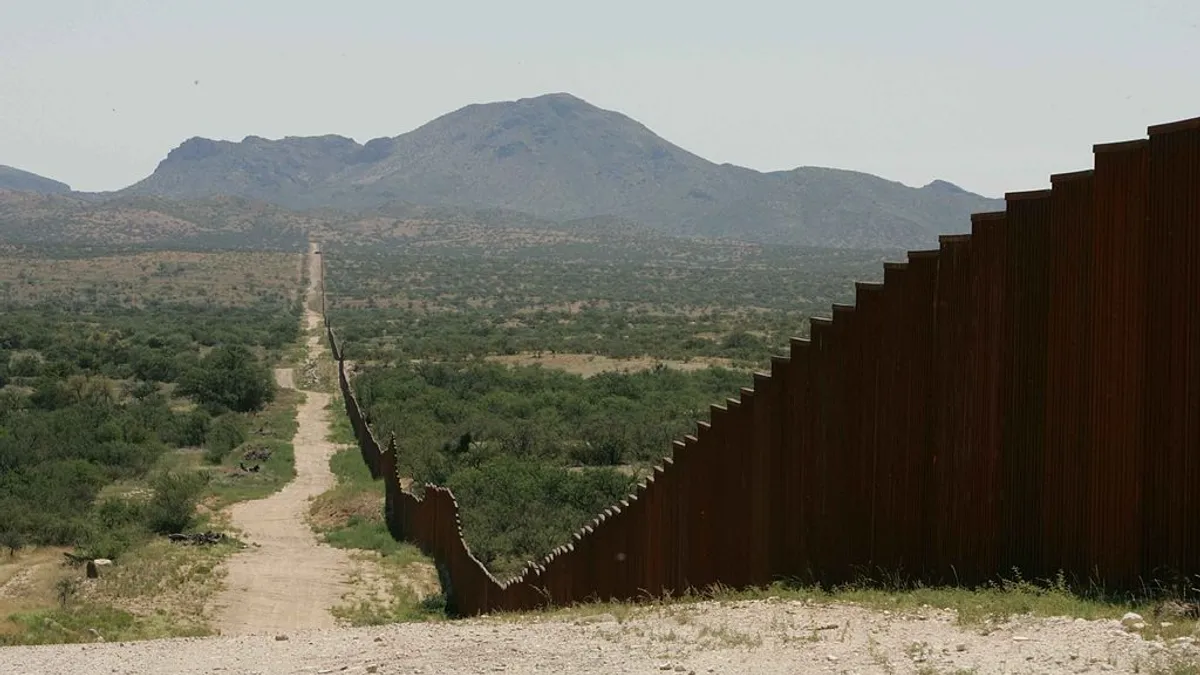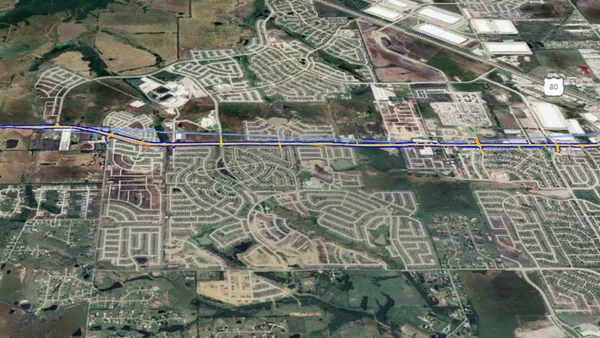Dive Brief:
-
The Department of Homeland Security and U.S. Customs and Border Protection have released additional specifications for the proposed border wall between the U.S. and Mexico.
-
Federal officials have supplemented the original notice posted late last month with details that prescribe 30-foot-tall sections of concrete with anti-climbing and anti-damage features. The formal request for proposals is expected to be posted as early as today.
-
The agency's notice, posted online, also indicated that before the wall's construction would begin, the winning bidder or bidders would build prototypes for evaluation. If and when the wall is built, construction is likely to begin in the West, near El Paso, TX, Tucson, AZ, and El Centro, CA, according to the Austin American-Statesman.
Dive Insight:
The agency said the 30-foot concrete barriers would not necessarily comprise the entirety of the wall but would be used for the initial phase of construction. In addition, experts have noted that there are some areas along the border that would not be appropriate for concrete barriers.
According to the American-Statesman, some U.S. Border Patrol agents have argued that they need to be able to see through the wall for safety reasons and would like federal officials to utilize a design that would let them do that. The barriers that currently run along the border include both fencing and solid wall.
Conceptual designs are due March 20, and from there, project officials are expected to narrow the list of bidding finalists. The contractors, engineers and designers to make the cut will be required to submit a full RFP, including pricing, by May 3. The department will likely issue contracts to multiple companies.
U.S. Customs' preliminary notice about bidding procedures for the project drew more than 200 interested parties, although upon media investigation, many of those inquiries were determined to be less than serious inquiries from non-construction-related businesses. Among those having expressed interest are defense contractor Raytheon and global construction firm Caddell, which represent the size and caliber of operation with the capacity to service such a large-scale project.
There are still no details about how the government will pay for the wall, although an early Department of Homeland Security report gauged the cost of the three-year project at $22 billion.
One of President Donald Trump's first post-inauguration actions was to sign an executive order that directed the DHS to accelerate construction of the wall. House Republicans have since introduced a spending plan that would allocate $12 billion to $15 billion for its construction.













